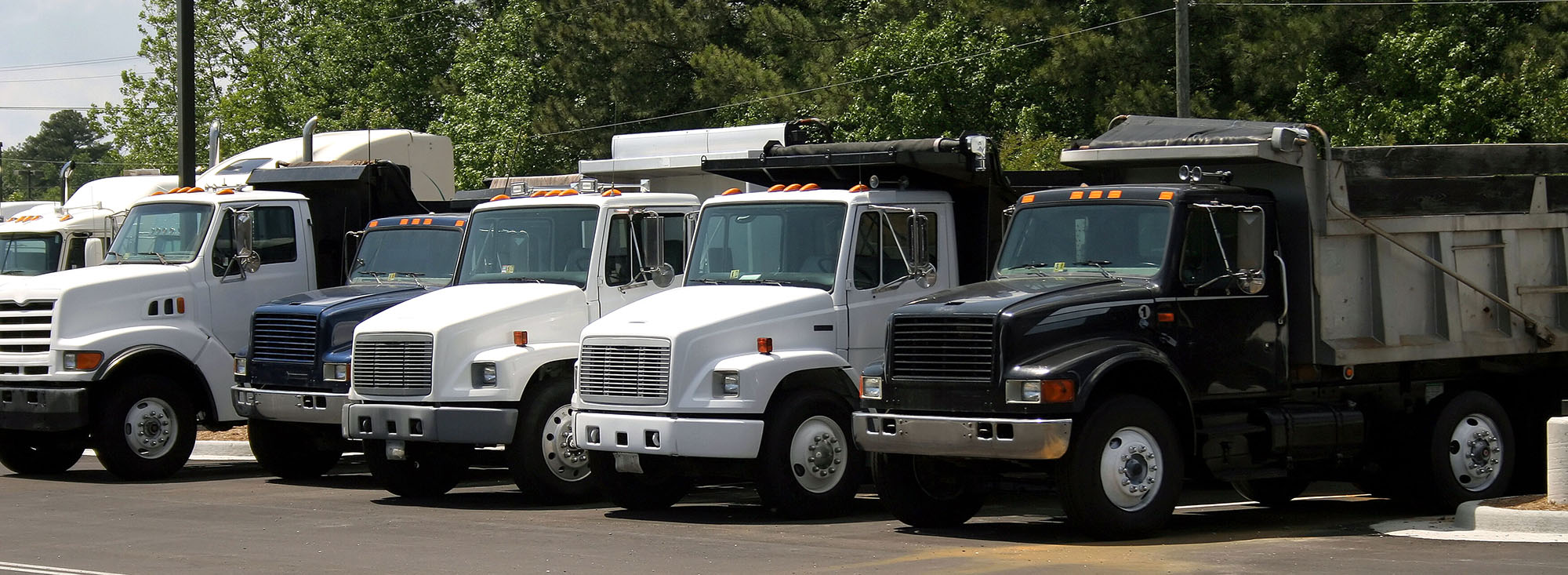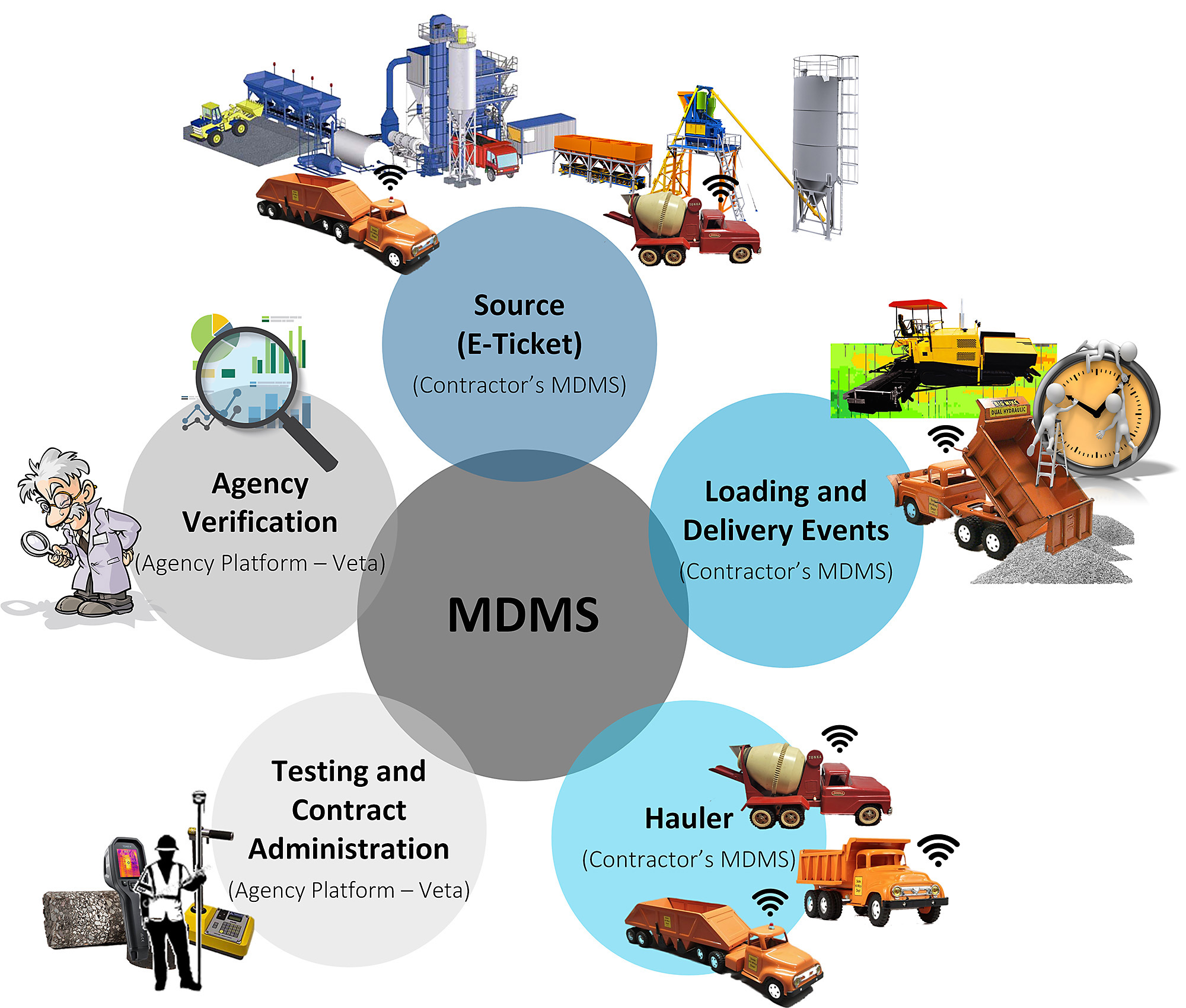
The e-Ticket: A Catalyst for Digital Integration
e-Ticketing is an example of technology that enables additional innovation and growth in the e-Construction space. This innovation does more than just provide stakeholders with an electronic means to produce, transmit, and share materials data and track and verify materials deliveries.
According to Kathryn Weisner, Every Day Counts round six (EDC-6) team co-lead, “e-Ticketing is a gateway technology to many other digital applications and integrations in the e-Construction space.” The information contained on e-Tickets is now being used by numerous partners in a roadway’s lifecycle to enhance the quality of construction, use, and maintenance.
At the Minnesota Department of Transportation (MnDOT), e-Tickets are one part of a much larger e-Construction effort that seeks to digitally connect the lifecycle of a roadway from end-to-end. MnDOT is the steward for the American Association of State Highway and Transportation Officials (AASHTO) provisional standard (pre-publication) for the material delivery management system (MDMS). MDMS is a system that integrates digital information across a spectrum of users from contract administration, construction, materials, civil rights and labor compliance to industry partners. e-Ticketing fits uniquely into MDMS because an e-Ticket provides much of the information that will be used across these groups. A great deal of information is required to create a digital roadway. MDMS is a complex system where the information has many “on- and off-ramps,” but it all starts with an e-Ticket.
One e-Ticket’s Journey
Moving through the lifecycle of a roadway, an e-Ticket begins by capturing source data and loading and delivery events. On-site testing can add information to a ticket such as material temperature, ambient conditions, laboratory and field test results, paver-mounted thermal profiling, and more. Equipment operators using MDMS can use the delivery time reporting to better time their work, reducing paver stops that would normally negatively affect the quality of the pavement. The information contained on the e-Ticket then flows to agency departments and systems, including:
- The Civil Rights Department for use on prevailing wage reports—indicating time on site, how long items take to deliver, etc.
- Contract administration for reconciling quantities for payments and for future estimates.
- Materials engineers for geolocation information on dump sites with respect to material source, mix design, laboratory and field test results, paver-mounted thermal profiling, and more, which can be used for assistance in monitoring quality, specification refinements, etc.
- Pavement management systems for lab- and field-testing efforts on the finished roadway, along with other intelligent construction technology information to link to roadway performance.
Eventually, this information will all come together to develop a digital material as-built of the roadway. Over time, the information will be used again and again by asset management, pavement management, and materials groups, providing valuable data for roadway lifecycle costs, maintenance, and future project scoping. Mix design reviews will now include specific geolocated information that goes all the way back to the plant where it was loaded.
Access to this information is already providing MnDOT with tangible benefits. Trucking is the second-largest expense for contractors in Minnesota, and digital integration of e-Ticket information is reducing the time needed for audits to verify hauling information such as driver information, load verification, load acceptance, and reconciliation.

Visual representation of the Minnesota Department of Transportation’s material delivery management system.
Credit: Minnesota Department of TransportationThe Road Ahead
According to Rebecca Embacher, MnDOT advanced materials and technology engineer, “We are only scratching the surface in terms of what digital integration and the creation of the digital roadway can accomplish.”
MnDOT, along with other participating Transportation Pooled Fund (TPF-5 (466)) States and the Federal Highway Administration (FHWA), continue to develop a standardized testing and contract administration software, called Veta, which integrates with the MDMS. Veta currently provides the agency with geospatial and statistical information on intelligent compaction, paver-mounted thermal profiling, dielectric profiling systems, and pavement spot tests. The pooled fund continues to expand Veta’s e-Construction capabilities, with plans to further integrate with MDMS, ground-penetrating radar systems for roadway thickness and depth, and other upcoming intelligent construction technology applications. Future approved funding will integrate the material and geometric as-built information contained within Veta with pavement and asset management systems.
Once Veta collects and prepares this data, it can be transferred or pulled by AASHTOWare or other agency systems. Being part of the greater MDMS digital environment, this software not only receives data from other nodes, but can also feed information back into the system for greater synergy.
The digital space for
e-Construction is rapidly expanding with potential reach into all aspects of highway construction and management. The e-Ticket’s role has grown and expanded since its inception to enable many of these digital advancements in e-Construction.
“e-Tickets continue to expand and integrate into an increasing number of other e-Construction systems as time goes on,” said Rob Elliott, EDC-6 team co-lead. “e-Tickets improve efficiencies around data workflows and get our project delivery teams out of harm’s way, enhancing project safety. Our team is available to help agencies, whether their e-Ticketing programs are in their infancy or are well developed but looking to advance to the next level, through technical assistance or peer exchanges.”
—MORE INFORMATION
Contact Kathryn Weisner, FHWA Construction & Contract Administration Engineer, FHWA Resource Center, or Rob Elliott, Technical Director, Construction and Project Management Team, FHWA Resource Center, for information and technical assistance.
Visit FHWA’s e-Ticketing and Digital As-Builts EDC webpage for more information and resources.
Notice: The U.S. Government does not endorse products or manufacturers. Trademarks or manufacturers’ names appear in this article only because they are considered essential to the objective of the document.
Recommended Citation: U.S. Department of Transportation, Federal Highway Administration - Washington, DC (2023) Innovator Newsletter, January/February 2023, Volume 16 (94). https://doi.org/10.21949/1521898



